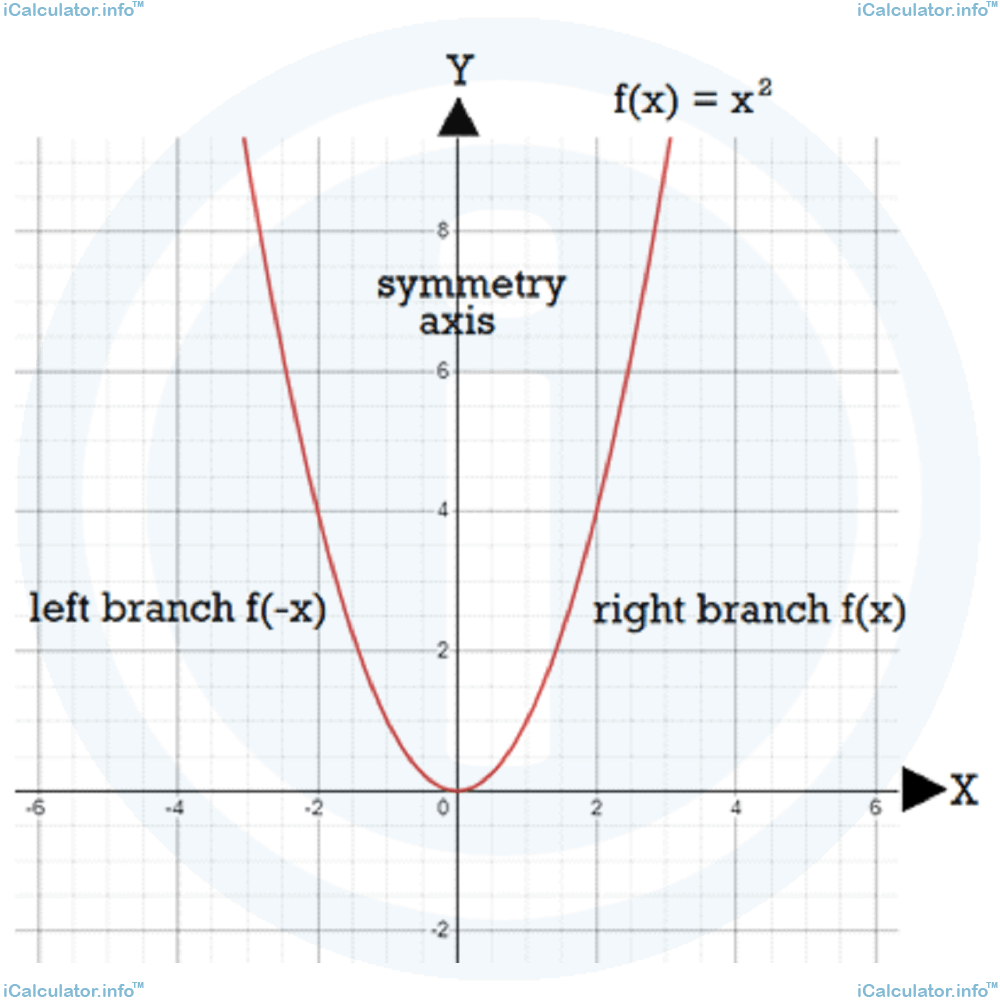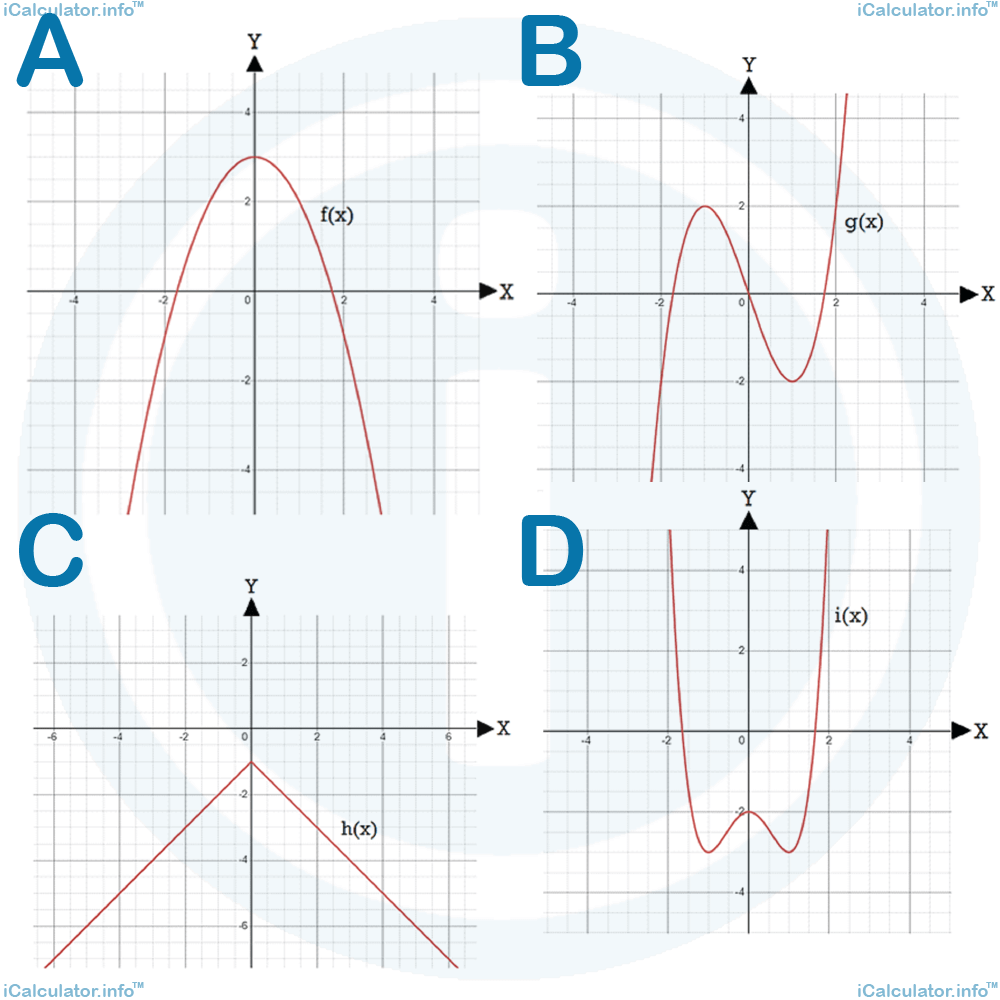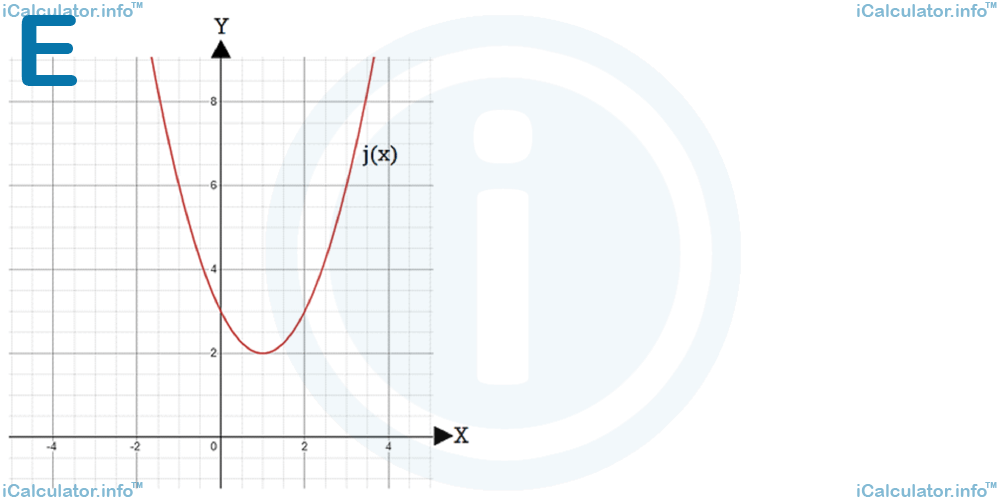Menu
Math Lesson 16.7.3 - The Graph of Even Functions
Please provide a rating, it takes seconds and helps us to keep this resource free for all to use
Welcome to our Math lesson on The Graph of Even Functions, this is the third lesson of our suite of math lessons covering the topic of Even and Odd Functions, you can find links to the other lessons within this tutorial and access additional Math learning resources below this lesson.
The Graph of Even Functions
Since in even functions f(x) is always equal to f(-x), the left part of the graph is symmetrical to the right part, where the Y-axis acts as a symmetry axis. For example, it is known that the graph of the parent quadratic function f(x) = x2 (which you already know is an even function) is a parabola and its arms are symmetrical to each other on the vertical axis (we have called it a horizontal symmetry), as shown in the figure below.

The same thing is true for the rest of even functions. Therefore, we can understand whether a given function is even or not by checking the horizontal symmetry of the graph.
Example 3
Which of the functions shown in the following graphs is even?


Solution 3
- The figure shows a parabola. This means the function f(x) is quadratic. Since the vertex of this parabola is at x = 0 [more precisely at (0, 3)], this function is even because the vertical axis is a symmetry axis for the graph. Indeed, using the known techniques to identify the function's formula when its graph is given, it results that the function shown in the figure is f(x) = -x2 + 3.
Looking at the graph, it is easy to see that for example f(-1) = f(1) = 2; f(-2) = f(2) = -1; and so on. - The function g(x) in the figure is not even, because we can identify two opposite values x and -x for which g(x) ≠ g(-x). For example, for x = 1 we have g(1) = -2, while for x = -1, we have g(-1) = 2.
Indeed, using the known techniques to identify the function's formula when its graph is given, it results that the function shown in the figure is g(x) = x3 - x. - The function h(x) is even because it is obvious that the Y-axis is a symmetry axis for its graph. Indeed, if we try a few opposite x-values they will always give the same y-value. For example, h(-1) = h(1) = -2; h(-2) = h(2) = -3; h(-3) = h(3) = -4; and so on.
Indeed, using the known techniques to identify the function's formula when its graph is given results in the function shown in the figure is h(x) = -|x| - 1. - It is evident that the function i(x) is even, as the two halves are symmetrical to the vertical axis. Taking some opposite values yields i(-1.5) = i(1.5) = -1.5; i(-1) = i(1) = -3; i(-0.5) = i(0.5) = -2.5; and so on.
Using the known techniques to identify the function's formula when its graph is given results in the function shown in the figure is i(x) = x4 - 2x2 - 2. - The function j(x) is not even as when examining the graph it is easy to find two opposite x-values for which the corresponding y-values are different. For example, for x = -1 and x = 1, we have f(-1) = 6 and f(1) = 2.
Using the known techniques to identify the function's formula when its graph is given results in the function shown in the figure is j(x) = x2 - 2x + 3.
You have reached the end of Math lesson 16.7.3 The Graph of Even Functions. There are 10 lessons in this physics tutorial covering Even and Odd Functions, you can access all the lessons from this tutorial below.
More Even and Odd Functions Lessons and Learning Resources
Whats next?
Enjoy the "The Graph of Even Functions" math lesson? People who liked the "Even and Odd Functions lesson found the following resources useful:
- Graph Even Feedback. Helps other - Leave a rating for this graph even (see below)
- Functions Math tutorial: Even and Odd Functions. Read the Even and Odd Functions math tutorial and build your math knowledge of Functions
- Functions Revision Notes: Even and Odd Functions. Print the notes so you can revise the key points covered in the math tutorial for Even and Odd Functions
- Functions Practice Questions: Even and Odd Functions. Test and improve your knowledge of Even and Odd Functions with example questins and answers
- Check your calculations for Functions questions with our excellent Functions calculators which contain full equations and calculations clearly displayed line by line. See the Functions Calculators by iCalculator™ below.
- Continuing learning functions - read our next math tutorial: Relation and Function
Help others Learning Math just like you
Please provide a rating, it takes seconds and helps us to keep this resource free for all to use
We hope you found this Math tutorial "Even and Odd Functions" useful. If you did it would be great if you could spare the time to rate this math tutorial (simply click on the number of stars that match your assessment of this math learning aide) and/or share on social media, this helps us identify popular tutorials and calculators and expand our free learning resources to support our users around the world have free access to expand their knowledge of math and other disciplines.